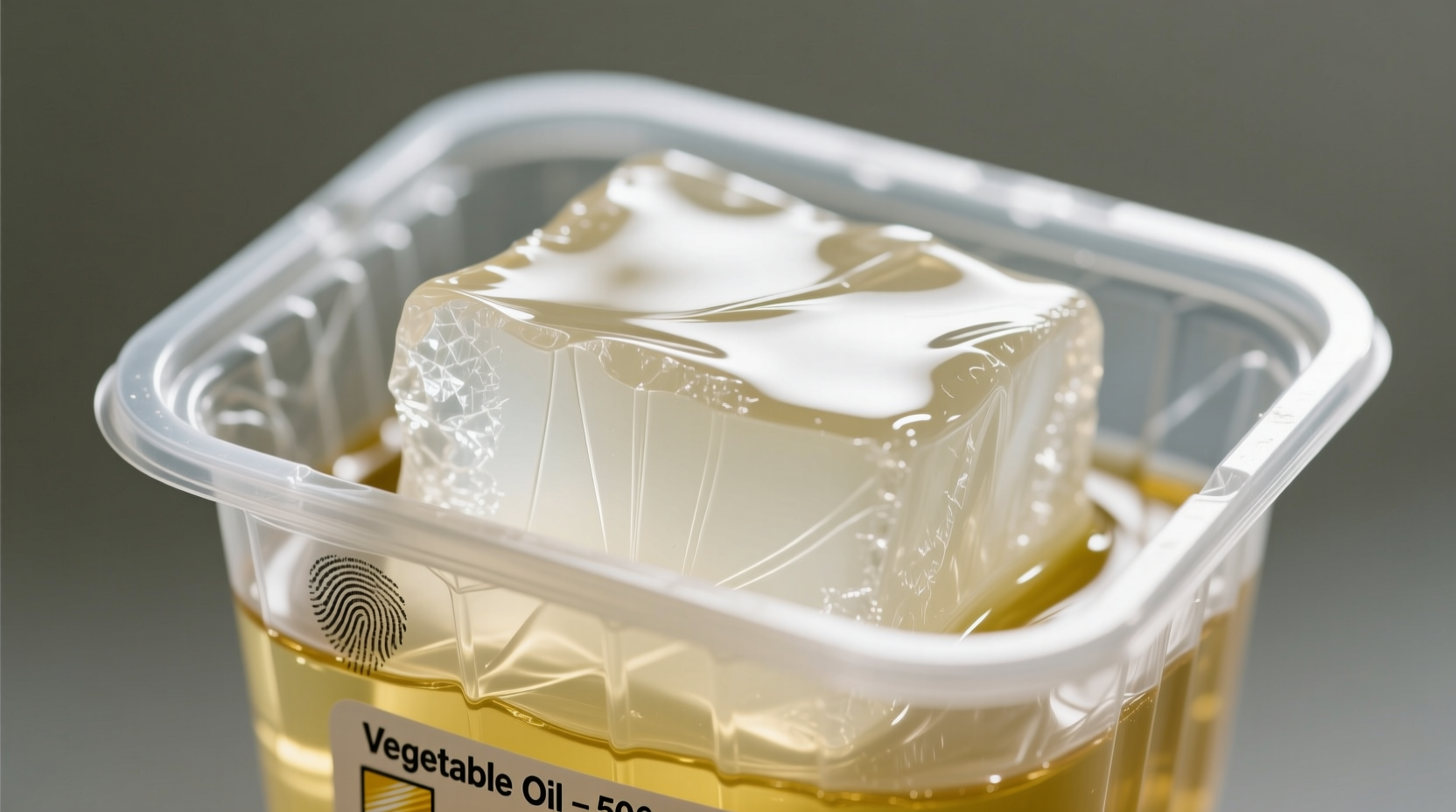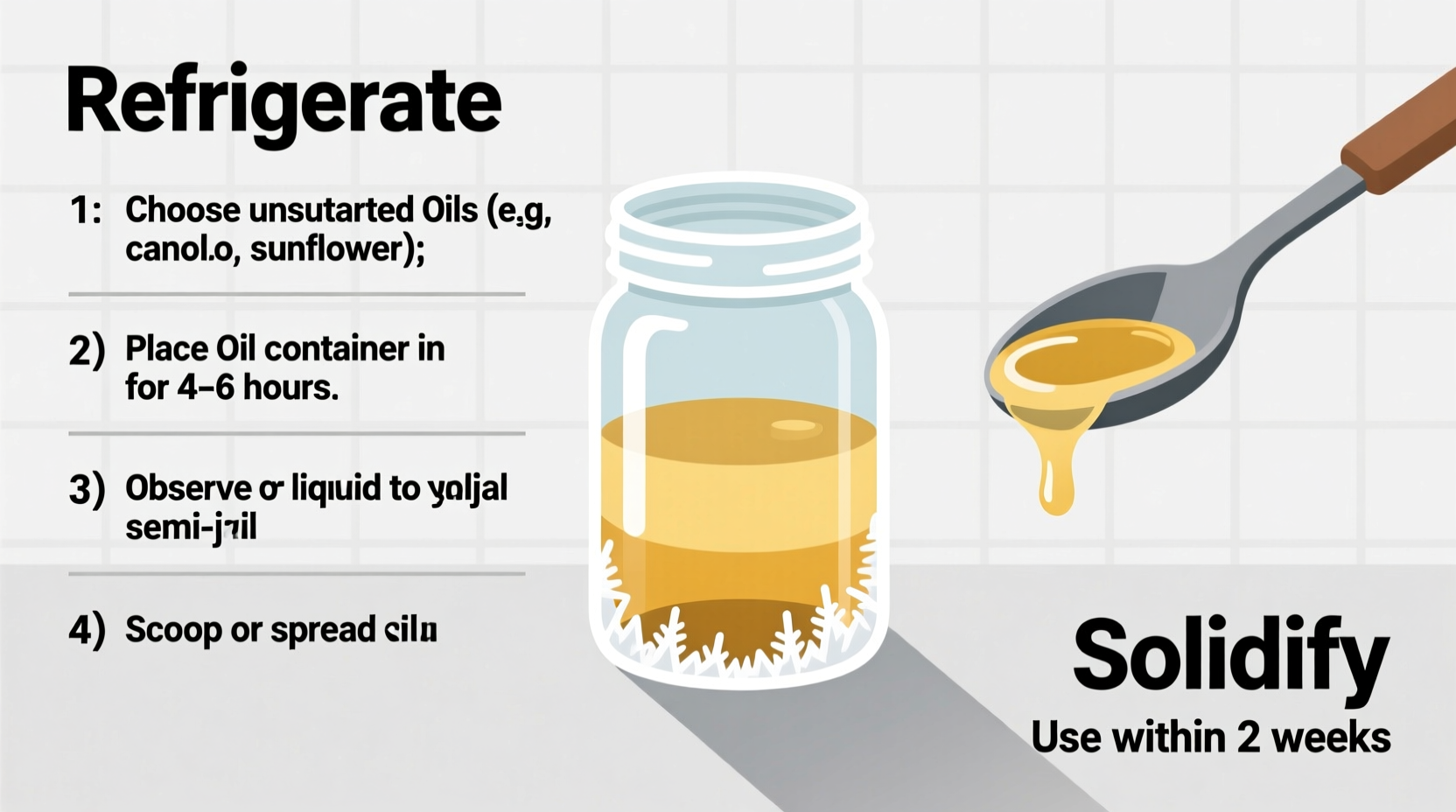The most reliable way to solidify cooking oil is by using absorbent materials like bread, flour, or commercial oil solidifiers. For small amounts, simply cooling used oil in the refrigerator will cause natural solidification. Never pour liquid cooking oil down drains as it creates plumbing blockages and environmental hazards.
Ever wondered how to safely handle that leftover frying oil after making your favorite crispy foods? Solidifying cooking oil isn't just convenient—it's essential for proper disposal and environmental protection. This comprehensive guide reveals proven methods to transform liquid cooking oil into a solid state using household items or specialized products, with clear safety protocols you need to follow.
Why Solidify Cooking Oil?
Before diving into the how to solidify cooking oil process, understanding the why matters. Liquid cooking oil poured down drains causes severe plumbing issues and environmental damage. According to the Environmental Protection Agency, grease blockages cost municipalities over $1 billion annually in sewer maintenance. Solidifying oil transforms it into a safe, disposable material that won't clog pipes or harm water systems.
Safety First: Critical Precautions
Working with hot oil requires extreme caution. The National Fire Protection Association reports cooking oil fires account for 15% of home cooking incidents. Always follow these safety protocols:
- Cool oil completely before handling (minimum 2 hours at room temperature)
- Never mix water with hot oil—it causes dangerous splattering
- Use heat-resistant containers for transfer
- Wear protective gloves when handling oil containers
Three Proven Methods to Solidify Cooking Oil
Absorbent Material Method (Best for Home Use)
This how to solidify cooking oil at home technique uses common kitchen items:
- Cool oil completely in its original cooking container
- Add absorbent material (use 1 cup per quart of oil)
- Stir gently until mixture thickens
- Allow 30 minutes for complete solidification
- Transfer to sealed container for disposal
Effective absorbents include:
- Bread cubes (stale works best)
- Flour or cornstarch
- Cat litter (non-clumping)
- Coffee grounds
| Absorbent Type | Ratio to Oil | Solidification Time | Best For |
|---|---|---|---|
| Bread cubes | 1 cup per quart | 20-30 minutes | Small batches, home cooking |
| Flour/Cornstarch | 1/2 cup per quart | 15-25 minutes | Medium quantities |
| Non-clumping cat litter | 1 cup per quart | 10-20 minutes | Large volumes, restaurant use |
Commercial Solidifier Method (Most Efficient)
For those asking how to solidify cooking oil quickly, commercial products offer the fastest solution. Products like Grease Solidifier or Oil Gone Solid contain proprietary polymers that transform liquid oil into a rubbery solid within minutes. These meet EPA guidelines for grease management and are approved for municipal disposal.
Usage steps:
- Cool oil to room temperature
- Add solidifier according to package instructions
- Stir for 30 seconds
- Wait 5-10 minutes for complete solidification
- Dispose in regular trash

Natural Cooling Method (For Small Quantities)
This approach works well when exploring how to solidify vegetable oil without additives. Certain oils like coconut or palm oil naturally solidify at room temperature. For other oils:
- Pour cooled oil into freezer-safe container
- Place in refrigerator for 2-3 hours
- Check consistency (most oils solidify between 40-50°F)
- For complete solidification, transfer to freezer for 30 minutes
Important limitation: This method only works for oils with high saturated fat content. Olive oil and most vegetable oils won't fully solidify using this technique alone.
Proper Disposal Protocol
After successfully solidifying your oil using any how to solidify cooking oil method, follow these disposal steps:
- Transfer solidified oil to leak-proof container
- Seal container with tape
- Label "Solidified Cooking Oil"
- Place in regular trash (never recycling bin)
- Wipe original container with paper towels before reuse
The USDA Food Safety and Inspection Service confirms this disposal method prevents 95% of grease-related plumbing issues when followed correctly.
Common Mistakes to Avoid
When learning how to solidify used cooking oil, these errors compromise safety and effectiveness:
- Mistake: Adding absorbents to hot oil
Solution: Always cool oil completely first - Mistake: Using too little absorbent
Solution: Follow 1:4 ratio (absorbent to oil) - Mistake: Pouring oil down sink with hot water
Solution: Never do this—oil re-liquifies and causes blockages downstream
When Solidification Isn't Appropriate
Not all cooking oil situations require solidification. Consider these context boundaries:
- Reuse potential: If oil is clean and lightly used (for frying vegetables), filter and store for reuse (up to 3 times)
- Composting: Small amounts of vegetable oil can go in compost bins (max 10% of total volume)
- Recycling programs: Many communities accept liquid cooking oil for biodiesel production—check local options first











 浙公网安备
33010002000092号
浙公网安备
33010002000092号 浙B2-20120091-4
浙B2-20120091-4